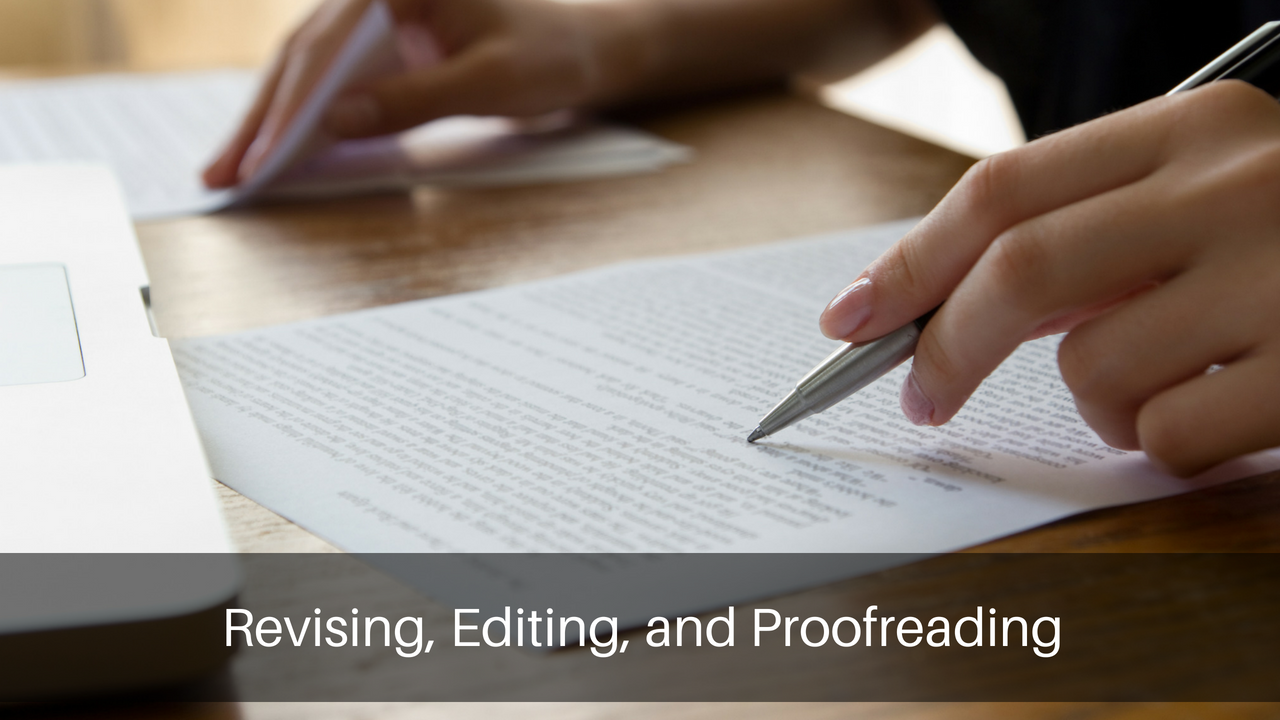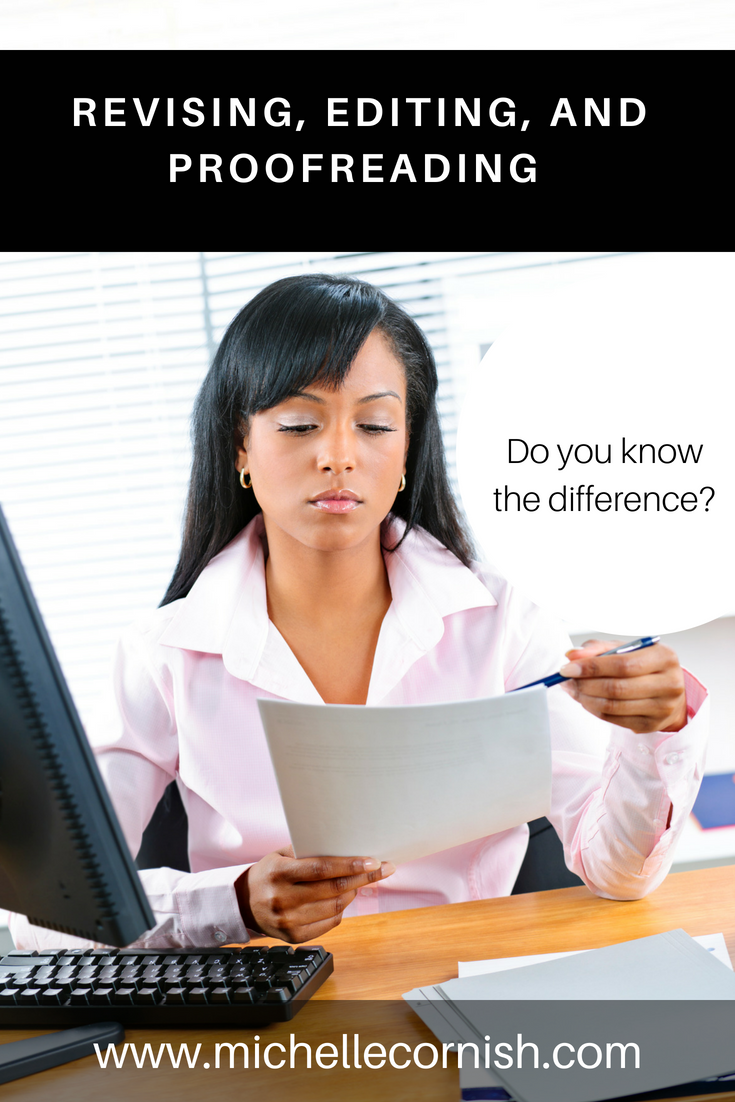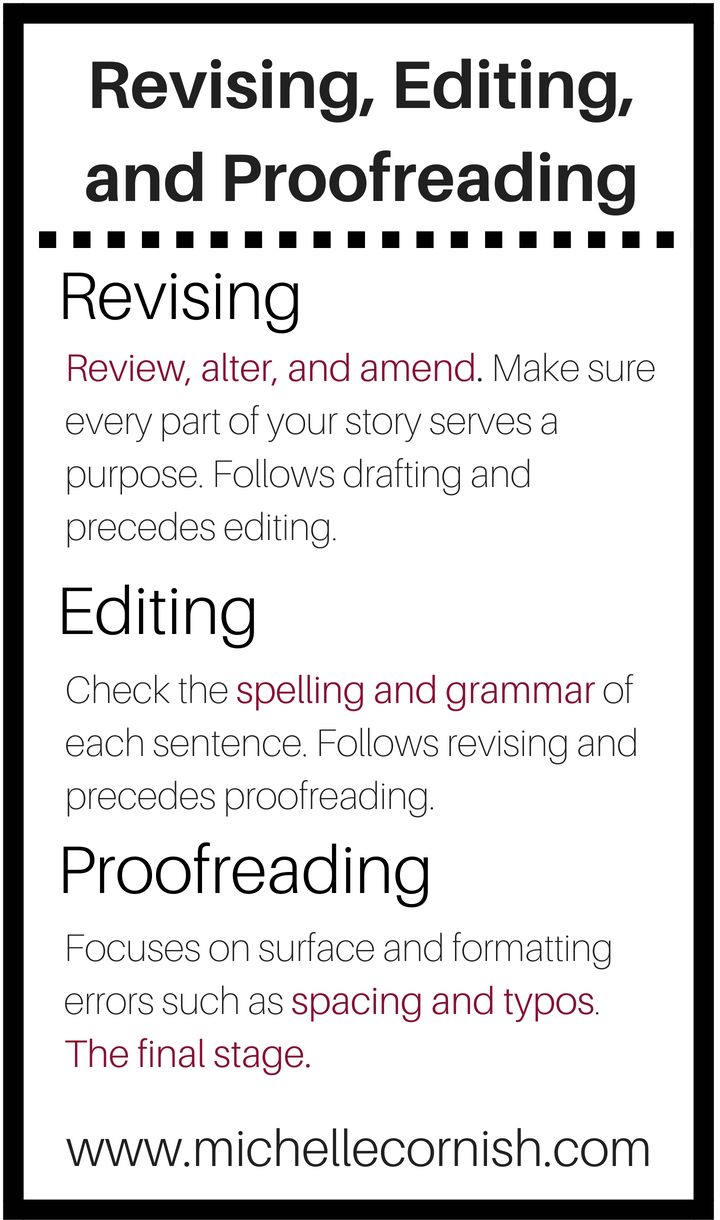The Differences Between Revising, Editing, and Proofreading
/As little as one year ago, I would have lumped all changes I made to my writing into the category of “editing”. But since taking my first novel through the process of revising, editing, and proofreading, it’s clear to me that these three processes are very different. While revising, editing, and proofreading do overlap, they each serve a different purpose and have different objectives when it comes to improving your writing.
Revising
Revising is the next step after you’ve completed your first draft. The focus of revision is whether or not you’ve achieved all the goals you set for your writing. Do all the pieces fit together? Is your tone appropriate? Does every character play a role in the story? At this stage, you need to consider your audience as well as the content of your writing.
Some people refer to revision as substantive editing. During this stage, you might rearrange chapters (or cut them), determine if your characters are behaving in accordance with the qualities you’ve given them, and make sure point of view and tense are consistent.
You may revise a piece several times before you get to the editing stage. To learn more about what’s involved in the revision process, check out this great advice from my friend K. Kris Loomis.
Editing
Editing is commonly broken down into content editing and copyediting. Content editing can overlap with revision and is sometimes also called substantive editing, and copyediting can overlap with proofreading. If you’re not sure what you need or what service your editor provides, it’s best to clarify this before any work is done.
In most cases, the term “editing” encompasses things like grammar, spelling, and punctuation. The objective during this stage is to make sure everything flows properly. This is often done by smoothing out grammar and punctuation, but sometimes, depending on the condition of your writing, more is needed and that’s where editing overlaps with revising.
Copyediting focuses on things like typos, spelling, and grammar mistakes which is why it sometimes overlaps with proofreading.
Proofreading
Proofreading and copyediting both review spelling and punctuation, but proofreading is the final step before publishing. It’s usually done after you have a final copy of your formatted work. A proofreader will look for typos as well as formatting issues. Their job is to make sure your work looks amazing.
Proofreaders will compare the final document to the edited manuscript and make sure no pages are missing, page breaks are in the correct spot, and the page numbers match what the table of contents says.
Revising, substantive editing, content editing, copyediting, and proofreading are often used interchangeably so if you’re unsure as to which service you need (or what you will be getting based on the language the professional you’re working with uses), make sure you ask.
If you are a do-it-yourselfer, there are some great courses that explain these differences and go into detail about what to watch out for when editing your own work. I’m currently taking Inklyo’s Editing Boot Camp and it is very detailed and really helpful.
I’d love to know your thoughts on the differences between revising, editing, and proofreading. Please share them in the comments.






